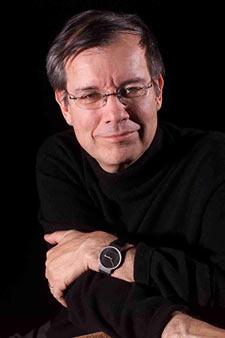
2007 Bower Science Theme: Human-centered Computing
From mid-century, warehouse-sized computers to modern day PDAs that fit in your hand, the amazing transformation of computer technology in the last 60 years owes its growth to much more than smaller transistors and improved memory chips. Those early computers were hand-fed information on bulky punch cards threaded in one at a time. Today we click with a mouse, touch scroll on an iPod, and tap screens on an ATM, which all make for much easier ways of telling a computer what to do. These kinds of interfaces are taken for granted - and that's exactly what Stuart Card likes to see. Card pioneered the field of making such access to computer electronics so streamlined that a human never stumbles over it or even notices it. Card's improvements in human-computer interaction have been as key to the electronic revolution as parallel advances in electrical engineering.
In 1974, Card began working for Xerox Palo Alto Research Center (Xerox PARC) and was asked, along with Allen Newell and Tom Moran, to focus on computer-human interaction. Drawing on his undergraduate degree in physics from Oberlin College and his Ph.D. in psychology from Carnegie Mellon University, Card combined psychology, artificial intelligence, and computer science to accomplish the task.
Card's first home run came when he used a then-little-known law called "Fitts' law" to examine input devices such as joy sticks, a head-motion detector, and a newfangled controller that hung by a cable from the computer called a "mouse." Fitts' law analyzes how easily a human can hit any given target - in this case, moving a cursor to a specific point on a screen - and Card measured the mouse to be almost as simple as if one could move the cursor around on the screen with one's hand. After Card's work, Xerox began manufacturing mice, Apple soon followed, and now they're practically de rigueur on all computers.
Card and his group went on to develop additional ways to characterize human-machine interactions, such as: Information Foraging Theory, a comparison of the ways humans search for information to the way animals forage for food; the Model Human Processor, a simplified model of the human brain, including such things as visual input, memory storage, and cognitive processes that can be used to give numerical descriptions of how humans behave; and the GOMS theory, short for Goals, Operators, Methods, and Selection, rules which describe how humans interact with computers. All of these have had momentous impact on creating computers that are best suited for the needs of the human mind and body.
Card is still at PARC, currently a Senior Research Fellow and the manager of the User Interface Research group. In his more than 30 years there, Xerox credits Card's work with leading to the development of a dozen products, as well as the founding of three software companies that have been spun off from Xerox PARC: Inxight Software, Outride, and Content Guard. Card has written three books and more than 70 papers, and holds 22 patents. In 2000, he was awarded the first Lifetime Achievement Award for Computer-Human Interaction from the Association for Computing Machinery; the following year, he was also elected the first member of the Computer-Human Interaction Academy.
Information as of April 2007

